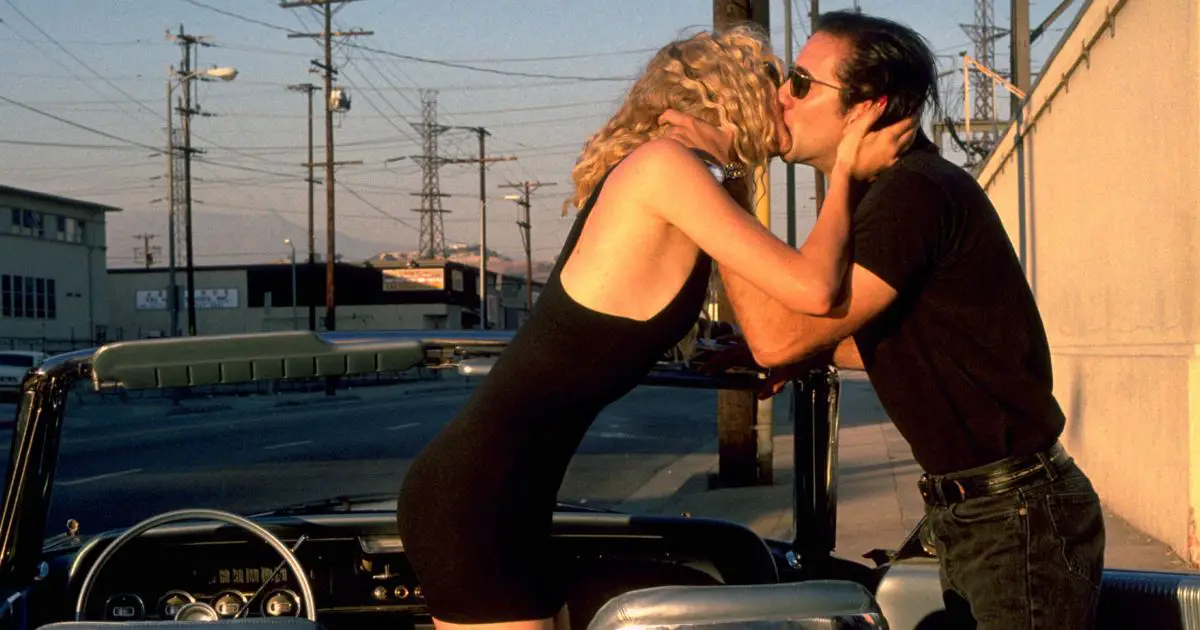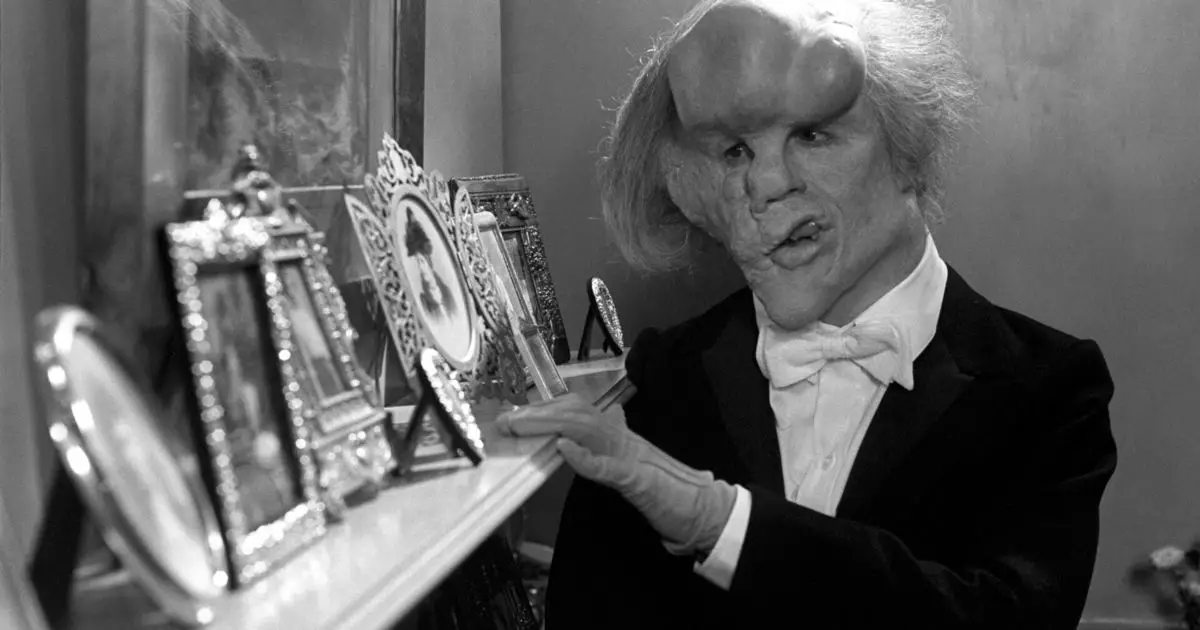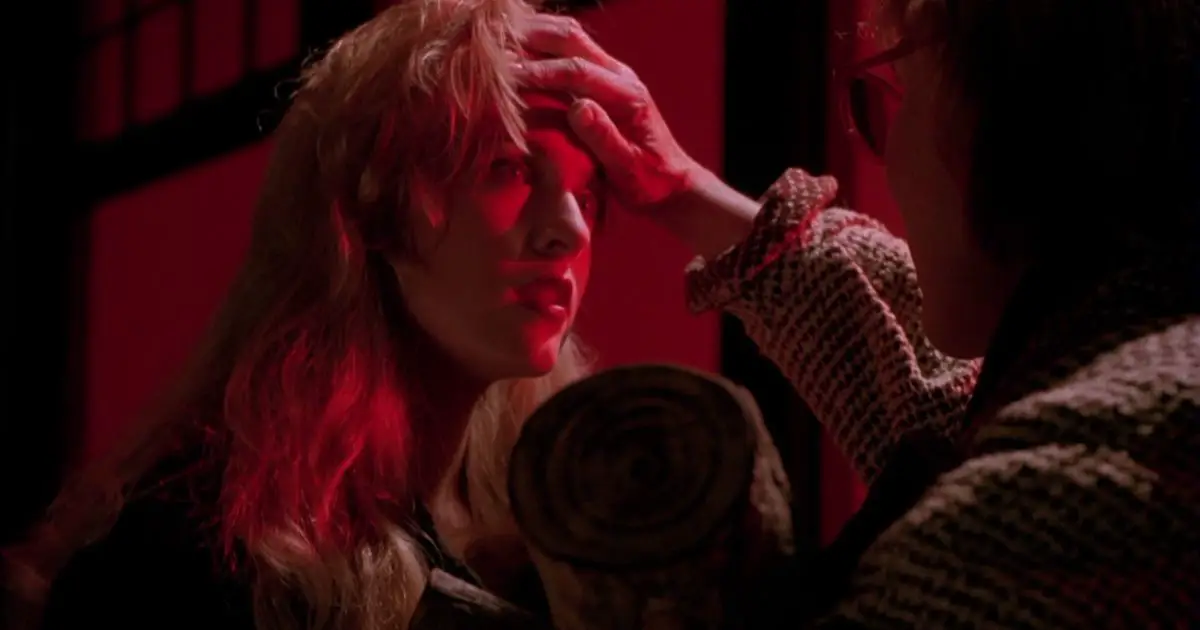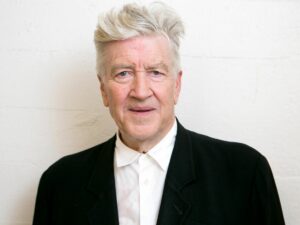David Lynch’s work masterfully blended the bizarre and the mundane to emphasize the odd. As a key figure in modern cinema, Lynch designed immersive environments, transporting viewers to inner worlds shaped by mood, texture, and a sense of uneasy artifice. His work seamlessly explored genres of melodrama, film noir, and art cinema, while drawing on architecture, design history, and an eccentric, avant-garde style.
Lynch made his first film, a 60-sec animation short Six Men Getting Sick (1967), at 21 while studying at the Pennsylvania Academy of the Fine Arts. Growing up, he aspired to be a painter. It was three years later in 1970 when enrolled at the AFI’s Center for Advanced Film Studies where he began work on his first full-length feature Eraserhead (1977)—a project that cemented his place in cinematic history.
While Hollywood is often critiqued for distorting reality and creating escapist fantasies, Lynch reimagined fantasy as a revolutionary tool, challenging viewers to view the world differently. His surreal intricacies and unique visual language have defined his signature style, one that experiments boldly within the aesthetic traditions of modernism and the avant-garde. His idiosyncratic approach even gave rise to the term “Lynchian,” cementing his legacy as a leading light among contemporary American auteurs.
Here’s a look back at the films that defined Lynch’s unparalleled legacy:
All David Lynch Movies, Ranked
10. Dune (1984)

Lynch’s epic sci-fi was an ambitious adaptation of the 1965 Frank Herbert novel but remains one of his most controversial works. Despite its stunning visuals and atmospheric world-building, the film was heavily criticized for its muddled storytelling and deviations from the source material. Lynch has openly expressed dissatisfaction with Dune in numerous interviews, citing studio interference and lack of creative control. He has described it as a “huge sadness” and refuses to revisit it, even disowning it as his vision.
Critics were divided upon release, praising its ambition but faulting its execution. The big-budget debacle, however, over the years, gained a cult following, appreciated more for its visual artistry than its coherence.
9. Wild at Heart (1990)

Adapted by David Lynch from Barry Gifford’s novel, Wild at Heart tells the engrossing tale of a passionate affair between the rebellious Sailor Ripley (Nicolas Cage) and the free-spirited Lula Fortune (Laura Dern). The couple openly displays their fiery love at every opportunity, much to the disapproval of Lula’s psychopathic mother, Marietta (Diane Ladd), whose erratic behavior sets the film’s dramatic events into motion.
Lynch crafts a dark, violent world filled with car crashes, robberies, betrayals, infidelity, sex, and death. These elements create a chaotic world that engulfs the star-crossed lovers. Wild at Heart won the prestigious Palme d’Or at the 1990 Cannes Film Festival under jury president Bernardo Bertolucci. However, years later, French auteur Jean-Luc Godard harshly criticized the film.
8. The Elephant Man (1980)

Set in Victorian London, Lynch’s sophomore film is based on a true story. It explores the poignant life of John Merrick (John Hurt), a freak-show performer born with a congenital disorder. Merrick uses his disfigurement to make a living as the “Elephant Man.” Surgeon Frederick Treves takes an interest in Merrick’s condition and soon discovers that beneath his rough exterior lies a refined soul with remarkable intelligence and sensitivity.
7. Inland Empire (2007)

In Inland Empire, Nikki (Laura Dern), a blonde actress, prepares for the biggest role of her life while developing an attraction to her co-star, Devon (Justin Theroux). Over time, she realizes her life is eerily mirroring the fictional film she is working on. The situation takes a darker turn when it’s revealed that the current project is a remake of a doomed Polish production, abandoned after the two leads were tragically murdered.
Inland Empire is the only film in Lynch’s career to be shot handheld on a Sony PD150 digital video recorder. The mood of the film is dark and mysterious with some of the filmmaker’s trademarks such as abstract imagery and strange symbolism. At nearly three hours, it casts a hypnotic, unsettling spell.
6. Twin Peaks: Fire Walk With Me (1992)

The story of Twin Peaks: Fire Walk with Me begins with the discovery of a young girl’s body, wrapped in plastic, in the town of Deer Meadow. The FBI sends Agent Chester Desmond (Chris Isaak) and his partner Sam Stanley (Kiefer Sutherland) to investigate. As they dig deeper, they uncover bizarre clues and strange occurrences, leading to the final seven days of Laura Palmer’s (Sheryl Lee) troubled life. The film also explores a mysterious killer and a town filled with dark secrets.
The tone is haunting and unsettling, raising more questions than it answers. Its open ending invites multiple interpretations, leaving viewers to draw their own conclusions. As the tormented Laura Palmer, Sheryl Lee delivers a deeply compelling performance.
5. Eraserhead (1977)

David Lynch’s 1977 debut feature, Eraserhead, follows the life of Henry Spencer (Jack Nance), a printer on vacation. His life takes a surreal turn when he learns his estranged girlfriend, Mary X (Charlotte Stewart), has given birth to a bizarrely deformed baby. Henry marries her, but their relationship quickly deteriorates, and Mary leaves. Left to care for the baby alone, Henry encounters a series of eerie, surreal events.
Over the years, the film has earned a cult status. Critics have lauded it as an extraordinary work of craft and vision. Frederick Elmes’ captivating black-and-white photography and Herbert Cardwell’s haunting sound design add to the eerie milieu. Jack Nance gives a memorable performance, making us empathize with his plight. Eraserhead is a dark, nocturnal odyssey filled with surreal horror and jump scares.
4. Lost Highway (1997)

Lynch co-wrote this neo-noir film with Barry Gifford. Set in Los Angeles, it follows saxophonist Fred Madison (Bill Pullman), who begins receiving mysterious VHS tapes showing footage of him and his wife, Renee (Patricia Arquette), at home. As they struggle to understand the situation, Renee is murdered, and Fred is accused of it. While on death row, Fred inexplicably transforms into a young man, Pete Dayton (Balthazar Getty), who leads a completely different life. This surreal turn veers the film into a cyclical dreamworld of madness.
Lost Highway can be classified as an occult psycho-drama that is heavily influenced by the visual style of the 1940s. The narrative follows a non-linear style. Lynch creates a sombre mood through sound, space, decor and lighting.
3. Blue Velvet (1986)

In Blue Velvet, Jeffrey Beaumont (Kyle MacLachlan) returns to his hometown of Lumberton after his father suffers a stroke. While visiting his father in the hospital, Jeffrey discovers a human ear, crawling with ants, in an empty lot on his way home. This sets the stage for a series of dramatic events that challenge his perception of his seemingly idyllic hometown. When Jeffrey digs deeper into the mystery, his search draws him into the life of Dorothy Vallens (Isabella Rossellini), a nightclub singer who is being tormented by the sadistic and violent gangster Frank Booth (Dennis Hopper).
As Jeffrey gets entangled in Dorothy’s world, he is exposed to the town’s darker side—one of depravity, violence, and exploitation—forcing him to confront the duality of human nature. Lynch employs abstract elements within the mise-en-scène to craft a surreal and mysterious atmosphere—a stylistic approach that has since defined the term “Lynchian.”
2. The Straight Story (1999)

Based on a true story, The Straight Story tells the tale of a 73-year-old Alvin Straight (Richard Farnsworth) who lives with his daughter Rose (Sissy Spacek) in a small Midwestern town. Alvin is differently abled and decides to meet his estranged brother, Lyle (Harry Dean Stanton), who has recently suffered a heart attack. Unable to drive due to poor eyesight and a lack of a license, Alvin sets off on a long journey from Iowa to Wisconsin on a lawnmower.
To bring an authenticity to the film, Lynch shot the film along the actual route taken by the real life Alvin. He brings a straightforward and warmly sentimental approach to his narrative style. Richard’s performance earned him an Academy Award nomination for best actor.
1. Mulholland Drive (2001)

Mulholland Drive is set in the beautiful but dangerous netherworld of Hollywood. It follows Rita (Laura Harring), who survives an attempted murder but loses her memory in a car accident. Disoriented, she stumbles into an apartment where she meets Betty (Naomi Watts), an aspiring actress. As the story progresses, the two women uncover a tangled web of identity, oscillating between truth and deception.
It’s difficult to understand Lynch’s films after first viewing. Even after multiple viewings, some of us may have only scratched the surface. His films operated on a metaphorical level, exploring deeper layers of emotion and symbolism. He reminded us that art doesn’t always have to explain—it only has to make us feel. To better understand and appreciate his approach, check out Catching the Big Fish: Meditation, Consciousness, and Creativity.
Lynch leaves behind a legacy that challenges the boundaries of storytelling. He has and will continue to inspire generations to embrace their unique visions and find beauty in the strange and unexpected.


Keep up the fantastic work!